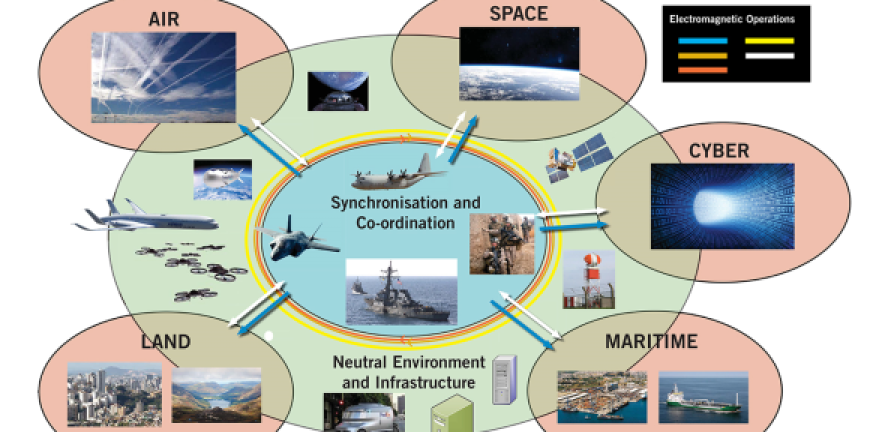
The growth of technology continually increases demand for electromagnetic spectrum in both civilian and military applications. As a result this resource is increasingly scarce, usage is overlaid, and the electromagnetic environment (EME) is increasingly complex, congested and contested.
The EME is essential to the UK across all domains; space, air, land, sea and cyber. To solve problems encountered when operating in the EME there are currently a range of approaches and traditional engineering techniques. However, applying new or alternative mathematics presents an opportunity to create new, innovative approaches.
The Defence, Science and Technology Laboratory (Dstl), PA Consulting and the Isaac Newton Institute are collaborating to engage the mathematical community to work on challenges in the EME.
A workshop was held in January 2020 to scope possible solutions to 6 challenges (selected from 70 different challenges that scientists and engineers in Dstl were trying to solve):
Autonomous Collaborative Spectrum Management in a Competed and Congested RF environment
Optimum search route to discover mesh sensor network
The mathematical approach iteratively refines the optimum route based on the information available and gathered as the mobile sensors traverse the environment. The mathematical approach starts by calculating the optimum route based on any information available at the start of the operation
This information is sufficient to provide an initial starting point and route across the environment. The algorithm then moves the sensor along the route, takes measurements and updates the route based on this new information.
A critical element of the route finding is that the algorithm determines the route which, based on the prior information will provide the maximum information gain, in other words most likely to gather information which helps collapse the many possible locations of the nodes to a smaller set of probable locations.
Sensing and transmitting using large swarms of drones
Evaluation and classification of known and unknown signals in a congested environment
Autonomous generation of communications protocols
The recommendation was to go back to the original challenge and formulate a more specific question/scenario to test out possible algorithms/analyses.
Understanding the boundaries of resilience of a signal coding scheme – OFDM (Orthogonal Frequency Division Multiplexing)
Professor Chandler-Wilde of Reading University mathematised the principle of OFDM to enable the team to approach the problem. They then explored its vulnerabilities and recommended following up by expanding on their discussions and simulation.
This research scoping workshop proved successful in engaging applied mathematicians from multiple disciplines to bring a fresh perspective. The longer term plan is that this activity will build closer links and collaborations between applied mathematicians and the owners of complex challenges, establishing a joined up multi-disciplinary UK community for this area. More information on this workshop can be found here.
As a direct result of this workshop, many of the academics have since started small funded projects (as detailed above), to further develop the work and a follow-on workshop has been scheduled for 16th-18th September 2020. More details on this workshop can be found here.
We are very keen to build a community that involves those that wouldn’t normally engage with these challenges, particularly women and those from ethnic minorities and also particularly welcome applications from mathematicians with expertise in areas such as real/complex analysis, algebra, topology, probability theory, geometry, or combinatorics.

